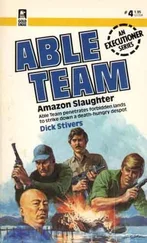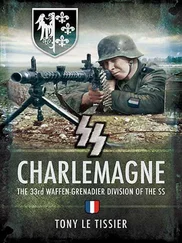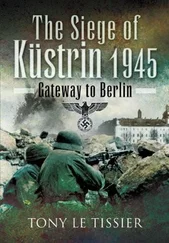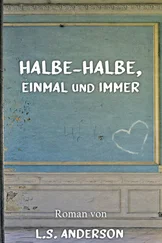Significantly Chuikov states, ‘…8th Guards Army, in whose front of advance formations of 1st Guards Tank Army were also operating, was diverted by order of the front commander to the north-west against the central sector of Berlin.’ [3] Chuikov, The End of the Third Reich , p. 163.
This diversion led to Chuikov’s 28th and 29th Guards Rifle Corps having to wheel sharply right through Rudow, Buckow and Lichtenrade into Mariendorf. [4] Ibid ., pp. 159–60.
Although Air Chief Marshal Novikov was responsible for coordinating air activity for the overall Oder–Neisse theatre operation with 2nd, 16th and 18th Air Armies under command, and was surely aware of the relative positions of the two fronts on the ground, he does not seem to have kept Zhukov informed on this point, possibly because Stalin forbade it.
Then, at about 1230 hours, the infantry of both fronts met near the Schönefeld autobahn junction, and later in the day Colonel-General A. V. Gorbatov’s 3rd Army of 1st Byelorussian Front linked up with 1st Ukrainian Front’s 28th Army at Teupitz, thereby completing the encirclement of 9th Army. [5] Lakowski/Stich, Der Kessel von Halbe 1945 , p. 50.
Some small groups of German troops tried to break through 28th Army’s lines between Mittenwalde and Teupitz during the day, but without success. [6] Ibid ., p. 53.
Koniev joined Colonel-General Rybalko on the southern bank of the Teltow Canal to observe 3rd Guards Tank Army’s assault crossing. For this he had amassed no fewer than 1,420 guns, of which 400 were aimed over open sights, at the unprecedented density of 650 guns per kilometre, to fire a 55-minute opening bombardment. The importance he attached to this operation is obvious. When the attacks on either flank failed for various reasons, he pushed everything through the central successful bridgehead at Teltow. [7] Erickson, The Road to Berlin , pp 587–8.
Meanwhile, in its general advance on Potsdam, 4th Guards Tank Army had split, with 6th Guards Mechanized Corps heading west for Brandenburg, whose outskirts were reached that day, 10th Guards Tank Corps in the centre taking the eastern suburbs of Potsdam, and 9th Guards Mechanized Corps attempting a crossing into Wannsee. When this operation failed, this corps was also pushed across the Teltow bridgehead at Koniev’s suggestion. [8] Koniev, Year of Victory , p. 156.
The Soviet 13th Army reached Wittenberg on the Elbe that afternoon but ran into the Ulrich von Hutten , Theodor Körner and Scharnhorst Infantry Divisions, which reacted so violently that Koniev was led to believe that Wenck’s 12th Army was launching its anticipated counterattack, and therefore called in part of 5th Guards Mechanized Corps and 1st Air Assault Corps to assist. In fact General Wenck was not yet ready to launch an attack, but the news of the fighting caused some concern to 4th Guards Tank Army. [9] Ibid ., pp. 158, 161; Wagener, The Soviet Air Forces in World War II , p. 350; Erickson, The Road to Berlin , p. 592.
The Ulrich von Hutten Infantry Division retook Wittenberg by evening, established its headquarters there and deployed around the town.
The Soviet formations here were up against improvised but relatively strong German forces. The troops were mainly young recruits drawn from various training establishments in the area but they were led by experienced instructor officers and NCOs, and some of their equipment had come straight off the manufacturing lines. The Ulrich von Hutten ’s 3rd Tank-Hunting Battalion ran out of fuel that day, but was given a tip-off about the local Nazi Party chief ’s private store of 40,000 litres, which was promptly confiscated for the benefit of the division. [10] Gellermann, Die Armee Wenck , pp. 78–9.
Further south the intervention of the 5th Guards Army group under Koniev’s chief of operations, who, in addition to the chief of staff, had been sent to resolve the situation, succeeded in checking Field Marshal Schörner’s disruptive drive towards Spremberg. However, several more days of hard fighting were to ensue before the Germans were driven back. [11] Koniev, Year of Victory , p. 140.
That day 2nd Air Army moved all but its bomber bases forward across the Neisse, the bombers still having ample range for continuing operations in support of 1st Ukrainian Front. [12] Chernayev, ‘Some Features of Military Art in the Berlin Operation’, p. 105 .
There was also a surprise development in 33rd Army’s sector, where the bridgehead had been firmly contained by V SS Mountain Corps against all attempts to break out since the beginning of the operation. That morning the 2nd Brigade of the Dnieper Flotilla laid a smokescreen across the Oder opposite Fürstenberg and supported an attack by marine infantry and some troops of 33rd Army on the town. The withdrawal of V SS Mountain Corps had already begun, so there could not have been much resistance, if any, to this assault. [13] Zhukov, Reminiscences and Reflections , p. 610.
The 9th Army withdrawal that had started on 23 April continued smoothly enough on the southern and south-eastern sectors of the perimeter, where the Soviet attackers were unable to follow up fast enough. When the last of 21st Panzer Division had passed through Münchehofe, an engineer company set up a roadblock at the entrance to the village, using Goliath mini-tanks filled with explosives to be detonated beneath enemy tanks. [14] Fleischer, ‘Der Kessel von Halbe’.
The situation was more complicated on the northern sector, where the pressure from the Soviets was more direct, and on the eastern sector the combat team based on 32nd SS Field Training and Replacement Battalion and commanded by SS-Captain Frenken of 32nd SS Engineer Battalion was having to fight a desperate battle on the line Ahrensdorf–Behrensdorf. [15] Wilke notes in the hands of the author.
During the night of 24/25 April, 21st Panzer Division withdrew to the line of the chain of lakes between Teupitz and Prieros, while 32nd SS Division’s battlegroup pulled back to the Prieros area on the right flank. At the same time, 21st Panzer Division’s 155th Armoured Artillery Regiment Tannenberger unilaterally decided to break out, requisitioning fuel from 21st Armoured Reconnaissance Battalion and heading off in a north-westerly direction without informing anyone. Nothing is known of this formation’s fate, but its departure left a gap in the lines and a lot of anger among those remaining. [16] Kortenhaus, Der Einsatz der 21. Panzer-Division , p. 135.
A crisis in morale was brewing, as Major Brand, commanding 21st Armoured Reconnaissance battalion, reported:
The artillery staff of the Tannenberger commandeered my fuel and fled via Ketsin to the north-west. Through lack of fuel my own unit was reduced to 70 per cent effectiveness, so future attempts to make a motorized break-out on our own would prove futile.
Resistance was only coming from the armoured divisions, the SS and, in the beginning, units from the city. There was no longer any operational direction higher than division. Units with unpopular officers were running away. Death sentences were no longer being carried out. From the orders given, the High Command was clearly demanding the constant sacrifice of our army, which was why our operational tasks made no sense. Everyone, from the leaders of reconnaissance units to senior staff officers, was in the dark about what was going on.
The question arose whether to flee with one’s troops on one’s own responsibility, or stay with the parent division – a question of conscience. I sent my adjutant, Second Lieutenant Kielhorn, home to his mother in Berlin by the last remaining route, as he was an only child. One hour later the ring was closed.
Читать дальше












